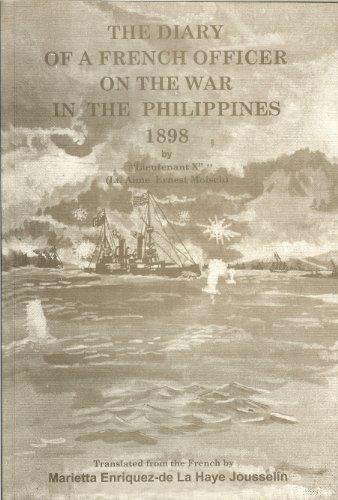The Americans Relate the Battle of Cavite to the English
When the MacCulloch, carrying dispatches from Commodore Dewey, anchored in the bay of Hongkong, it was the subject of great curiosity. The captain had nothing to say, but a reporter from the Hongkong Daily Press succeeded in extracting the personal account of an officer. This was immediately published, the alient poinrs of that article appear below.
“In the darkness of the night, we were unable to assess the impact of our guns but there must have been considerable damage because we succeeded in demolishing their artillery and we slowly entered the bay.
“The Spanish squadron boasted a total of 14 ships in formation protected from the rear and to their flanks by artillery stationed in Cavite. They had huge guns of 10 inch caliber.
“The Spaniards retaliated vehemently and soon thereafter the D.A. de Ulloa and the R. Cristina were upon us with guns much bigger than we had expected.
“Guided by the Olympia, our ships crossed the entrance to the port. We started firing at the broadsides, then we opened fire from the portside. As we turned, we fired our starboard guns. This operation was repeated three or four times.
“The second time around, the Spanish admiral on the Reina Cristina put up a valiant attack. He received a volley in return, which he survived, to our astonishment. The admiral was on deck when one of our guns reduced the bridge to smithereens, but he managed to survive unhurt. Shortly after, we saw him walking on the deck. Then, a shell launched by the Boston smashed into the forward part of the ship which caught fire and sank rapidly with 200 men on board. The admiral was one of the survivors.
“Two torpedo boats attacked our fleet but were forced to withdraw when we opened fire. One was hit by a shell and sank, and the other was able to reach the beach and the crew was saved.
“At breakfast, we received orders to move a short distance away but did not drop anchor.
“We launched a new attack at about 11 o’clock in the morning, this time concentrating on our opponent’s artillery since the Spanish fleet was completely destroyed. The Baltimore took the lead, with the order to attack the artillery division on the coastline, thus carrying out the most dangerous operation of the day. They had 12-inch cannons, a single shell having the capacity to pulverize a battleship. Nevertheless, the prestigious Baltimore drew up very close and at great speed, turned, and launched a heavy attack. It was astonishing to witness how quickly she demolished them by coming close to the openings of their guns.
“By then the squadron and all the important defenses had been destroyed. It will be difficult to forget the spectacle at the fort. The smoking hulks of the Spanish ships were filled with the dead and wounded. Human bodies were floating everywhere.
“I believe the Spaniards lost approximately 1,000 men, killed and wounded. We, on the contrary, did not sustain a single casualty or one seriously wounded.
“At 12:15 the Spanish flag from Cavite was brought to us. This elicited lively hurrahs from our squadron. At night, the MacCulloch dropped anchor in front of the guns of Cavite. This was a dangerous move. But the captain made it clear that if a single shot were fired at him, he would reduce the town to ashes. The threat produced the desired effect…
“As far as Manila is concerned, the city is in our power. All the ships and forts have been destroyed but when we left on May 5, the city had not yet surrendered. I hope by that by now it has. The forts at the entrance to the port surrendered the following day.”
The English reporter asked: “By the way, who cut the cables? I suppose that the Spaniards were responsible for that?”
The American replied, “Oh, no! This was ordered by the commander of the Zafiro. Since all kinds of alarming news were going to be telegraphed, we thought it best to cut the cable. I believe that the last telegram sent was in Spanish and it stated: Spanish squadrons very badly treated. The Americans have withdrawn to bury their dead.”
I cannot help smiling when I think that the most daring action of the day was to extinguish the fire of the artillery, which consisted of a single cannon.
